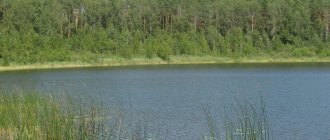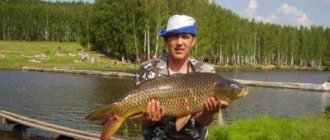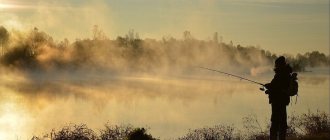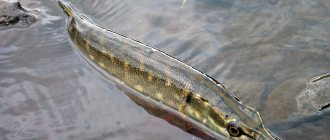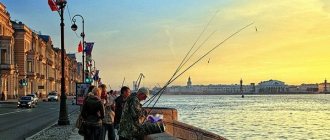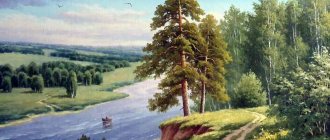general information
The Republic of Karelia is a northern region, which imposes certain restrictions. You can read more in the article “Karelia”, where you will find out all the necessary and basic information about the region. You should not go here before the end of May, especially in the northern regions (Belomorsky, Kalevalsky, Loukhsky). Even if the reservoirs are free of ice, the water may be cloudy and too cold, and the fish are just beginning to spawn. In addition, fishing restrictions are usually in effect during this time. You can read more in the article “Fishing rules in Karelia”
The main transport artery of the region is the P-21 Kola highway, which is in satisfactory condition, the same can be said about the A-121 Sortavala highway, which is located in South Karelia and crosses the region from east to west. Intradistrict roads are almost 100% unpaved. Important roads are usually in more or less good condition, but this cannot be said with certainty. For example, after heavy rains the road can be severely washed out. In any case, the Republic of Karelia is not a region where you need to drive a car designed to drive exclusively on smooth asphalt.
You may also find the articles “Ticks in Karelia” and “Snakes of Karelia” useful. But in general, there is no need to be afraid of animals here, but it is worth stocking up on insect repellents. We strongly recommend that you take care of your safety on the water. We wrote about this in the article “Rules of conduct on the water.” Every year, fishermen, including visitors, drown in the region. The usual reason is neglect of the simplest safety rules.
The presence of life jackets for Karelia should be considered a prerequisite if you are going to fish from a boat. Don't forget that the water in lakes is very rarely warm and you simply won't be able to survive long enough without a life jacket. And it’s not even worth talking about large lakes in which a strong wave can arise. Going out into the open there without life jackets is a very bad idea.
Well, now that we have told you all the most basic and necessary things, let’s move on to fishing itself.
Free fishing in the Republic of Karelia
It is unlikely that in Russia you can find another place as wonderful for any fishing as Karelia. In terms of the number of bodies of water per square meter of the Republic, no other place in the world can compete with it. After all, rivers and lakes occupy 25% of the territory here.
Rearrange 60 thousand lakes teeming with fish! And 27 thousand rivers! Let's try to determine the best places for fishing in Karelia.
Fishing in Karelia is also good for purely aesthetic reasons. This is a land of green forests, spacious plains, grandiose canyons, noisy streams and sky-blue water. Therefore, by going here, you can get double pleasure: great fishing and a break from the bustle of the city, enjoying the magnificent scenery.
Here are the TOP 5 best places where you can fish for free in the Republic of Karelia:
Shuya River
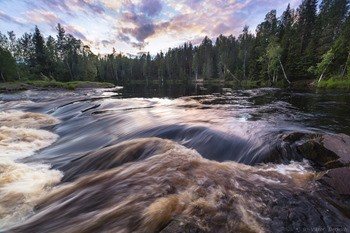
Description, what kind of fish is found, how to get there:
What kind of fish is found: pike, pike perch, burbot, ide, vendace, grayling, ruff, roach, dace, perch.
In Shuya, the locals joke, it’s like in Greece: there is everything. This deep and long (194 kilometers) river is home to more than 20 species of fish. Therefore, fishing here is always productive. Moreover, it is often possible to catch a trophy specimen even without particularly expensive gear and skills.
But such diversity also has a downside. Throughout Shuya, dozens of villages and towns are scattered along the banks, which means that the demand for this wonderful river is always great. Over the long decades of Shuya’s fishing history, local residents have managed to spoil its abodes so much with all sorts of baits and groundbaits that at first, fishing for an inexperienced tourist here can even disappoint. But if you show a little ingenuity and imagination, everything will immediately improve, and you definitely won’t leave there without a catch.
An interesting fact: crayfish are still caught in Shuya. You will probably meet locals on your way here who will offer you this prickly and biting delicacy. This means that the water in the river, despite the proximity of populated areas and the abundance of tourists, still remains clean.
GPS coordinates: 61.73415, 33.34931
Ladoga lake

Description, what kind of fish is found, how to get there:
What kind of fish is found: roach, pike, pike perch, trout, chub, bream, silver bream - about 60 species in total.
What can we say, everyone who has the courage to call themselves a fisherman should visit the famous Lake Ladoga at least once in their life. This gigantic ancient body of water, more than 200 kilometers long, serves as a natural border between two regions - Karelia and the Leningrad region. Thanks to its length, you can always find a place to your liking.
When going to the Karelian part of Ladoga, keep in mind that it belongs to the so-called middle taiga and consists of continuous spruce forests, densely overgrown with blueberries and green moss. Getting lost here is a piece of cake, so either don’t go far from populated areas or get a reliable guide in advance.
It is best to fish in the Karelian part of the lake from a boat, because the forest often comes close to the water’s edge. Experienced fishermen advise trying your luck with a trophy catch near the islands - the largest fish are usually found there.
GPS coordinates: 60.86645, 31.51035
Lake Syamozero

Description, what kind of fish is found, how to get there:
What kind of fish are found: pike, pike perch, burbot, perch, vendace, bream, ruff.
Syamozero is one of the five largest reservoirs in Karelia. It reaches 24 kilometers in length and is fed by a huge number of rivers and streams. Small and large islands are found in abundance on the water surface. This is not surprising, because millions of years ago there was a giant glacier on the site of Syamozero.
Fishing on Syamozero can please even the most demanding. People traditionally come here to try their luck in catching a predator: pike perch or pike. The best fishing method is spinning. Just make sure that you always have a solid supply of spinners on hand: Syamozero has a complex bottom topography, and therefore it’s very easy to leave a couple of hooks there. You should also remember that the lake is not too deep, and therefore it is better to fish here from a boat away from the shore.
As for peaceful fish, the ruff consistently holds the palm in terms of frequency of catching on Syamozero. It is found everywhere and takes almost everything a fisherman offers it. Bream and vendace are rarer; you will have to hunt thoroughly for burbot or grayling.
Unfortunately, Syamozero suffers from poachers and fishermen, but its fish stocks are still quite impressive.
GPS coordinates: 61.95582, 33.1494
Lake Pyaozero
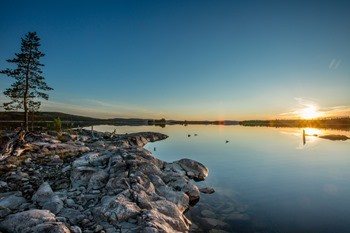
Description, what kind of fish is found, how to get there:
What kind of fish is found: burbot, perch, whitefish, vendace, pike, pike - 16 species in total.
Pyaozero has enjoyed well-deserved love among fishermen from all over Russia for many years. Being one of the five largest lakes in Karelia, it harbors a huge number of different fish. Don’t be surprised if, during a boat trip along Pyaozer, you suddenly see someone’s rickety house on one of the countless islands - most likely, this is a fishing base.
The most common species in Pyaozero are burbot, perch and pike. The latter is worth looking for off the coast, but truly large specimens are found only near the islands. Therefore, it is best to fish from a boat. It’s a good idea to purchase an echo sounder: the bottom topography in the lake is complex, and it’s quite problematic to determine by eye where fish may accumulate. But any tackle will do: you can try a donk, a spinning rod or a classic float - anything will definitely bite.
GPS coordinates: 66.10916, 30.98916
Lake Onega
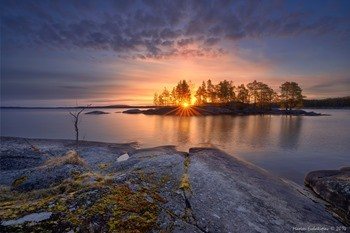
Description, what kind of fish is found, how to get there:
Lake Onega is smaller than Ladoga, but is in no way inferior to it in popularity. At the height of the season, a whole army of fishermen gathers on its shores. Basically, these are groups of several people united by a common hobby. There are also many who combine fishing with family outdoor recreation. If the choice fell on Lake Onega, then you need to take care of a special license for salmon fishing in advance; without it, catching this fish is prohibited. Roach and bream, pike perch and pike are also well caught in the reservoir.
GPS coordinates: 61.60292, 35.57289
Seasonal fishing in Karelia
The main flow of amateur fishermen is observed in the summer, during the holiday season, but in the heat the fish bite somewhat worse than during the spring feast (before and after spawning). In June the bite noticeably subsides. The second surge occurs with the arrival of autumn. The first temperature drops in September force underwater inhabitants to begin preparing for winter, that is, to actively feed and accumulate fat. Already in November, in the northern part of the region, on whose reservoirs the ice becomes earlier, the ice fishing season starts.
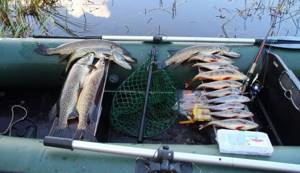
Let's take a closer look at fishing in Karelia at different times of the year:
Winter fishing in Karelia. In December the ice is already strong enough to go out on it without any fear. This month, burbot is excellently caught using a winter fishing rod with a float. January is the ideal time for fishing for white fish using various jigs. Of the predators, the most popular object is the pike, and the most effective tackle is the girder. February is not the best month for fishing; many species begin to bite only in the last days, anticipating the approach of the long-awaited warmth.
Fishing in spring. In March, ice fishing continues, but you need to be extremely careful because there is a high risk of failure. If thawed patches are visible on the ice, it is better not to risk it and wait for the reservoirs to open. At this time, many fish begin to fatten. Perch, pike, and rudd are well caught, but already in April these and some other fish begin spawning, and with it a fishing ban. In the northern regions, many lakes are freed from ice cover only in May. Nature is gradually coming to life and providing anglers with the most catchy baits - larvae and worms. At the end of spring, white nights begin. Fishing at dusk is more comfortable than in pitch darkness, but underwater inhabitants react painfully to this phenomenon, and there may be no bite at all.
Summer fishing. During the three summer months, fish are caught with varying success. It all depends on the weather conditions: it’s worse on hot days, better on cloudy days. You can fish from the shore or on a boat, and in different ways (of course, with the exception of poaching). The only disadvantage of summer fishing in this region is annoying insects, and you can always hide from tourists in some secluded corner. People appear very rarely on the shores of some lakes. In the summer, many switch to bream, chub and roach; these are the species that are most active.
Autumn fishing. It's time for real trophies. For their sake, fishermen are ready to “sweat” at work all summer in order to go on vacation in the fall. Humpback perch, large pike, heavy roach and other representatives of ichthyofauna are often caught on hooks. It’s just a pity that autumn fishing doesn’t last long for good catches. In October, along with a decrease in water temperature, the vital activity of underwater plants ceases. The vegetation gradually dies off, and the fish, having lost reliable shelter, move to greater depths. It's much more difficult to get it out of there.
Fishing in Karelia will always be successful if you prepare correctly and decide on the reservoir.
Do you know any other good places for fishing in the Republic of Karelia - write in the comments
